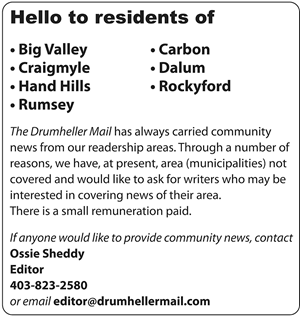
With resource revenues still struggling and the hardship of COVID 19, Alberta Finance Minister Travis Toews is predicting an $18.2 billion deficit in the coming year.
The Alberta Government delivered its budget on Thursday, February 25. MLA for Drumheller-Stettler Nate Horner says it is a budget for the times we are in, with investment in health care during COVID -19 with an eye on economic recovery.
“With a historic investment in health care, Alberta’s government is responding to the most pressing issues our province faces – responding to COVID-19 and keeping Albertans safe. At the same time, Budget 2021 prepares Alberta for economic recovery by creating jobs right now, while also taking a careful approach to spending. This budget protects both lives and livelihoods and I’m proud to support it,” said Horner.
In health care, they have created a $1.3 billion contingency for COVID-19, and $97 million to clear surgical backlogs. There is also money for new facilities and continuing care.
The government has also set aside $20.7 million with hopes to create 90,000 new jobs and $1,5 billion for key economic sectors.
To maintain responsible spending, they are continuing to look for labour efficiencies and aim to keep debt to GDP below 30 per cent, while bringing spending in line with other provinces.
In 2021-22, $1.226 billion will be allocated to municipalities under the Municipal Sustainability initiative, which frontloads infrastructure funding to sustain economic recovery and stimulus spending in the near term while helping municipalities transition to a lower overall funding level. In addition, $255 million in funding is being provided this year under the federal Gas Tax Fund.
“The impact of COVID-19 on the finances of municipal governments has been substantial. The $1.226 billion in funding that Alberta’s government is allocating to municipalities under the MSI will support the economic recovery of local governments while honouring the commitment we made to taxpayers to bring spending in line with other provinces,” said Horner.
















